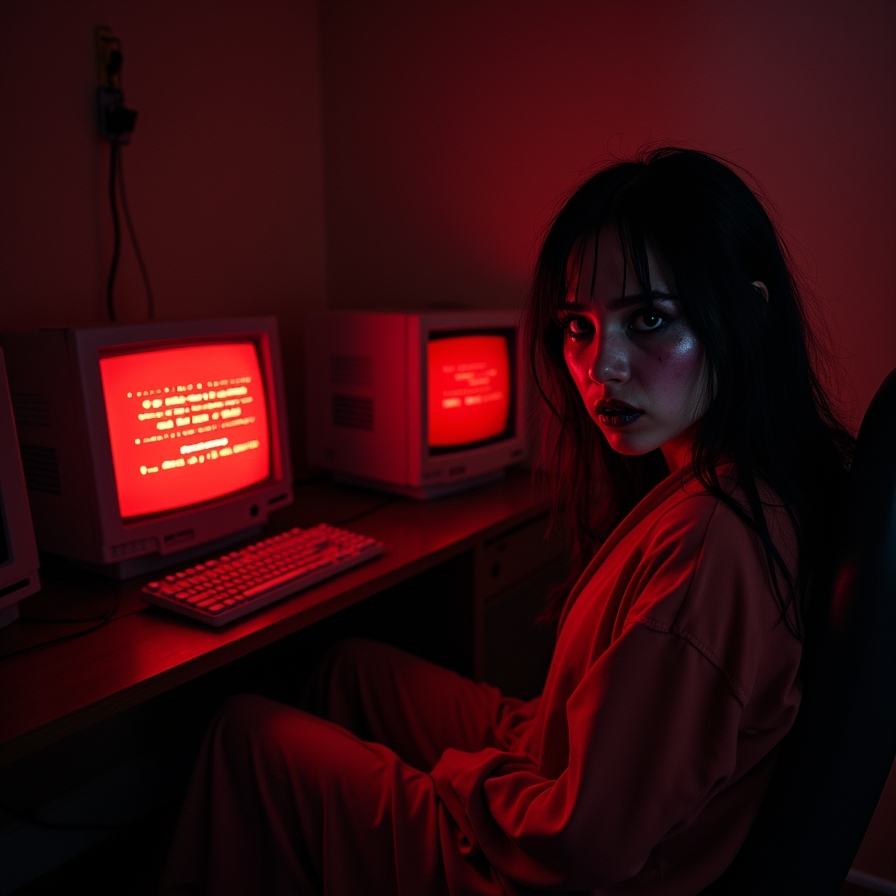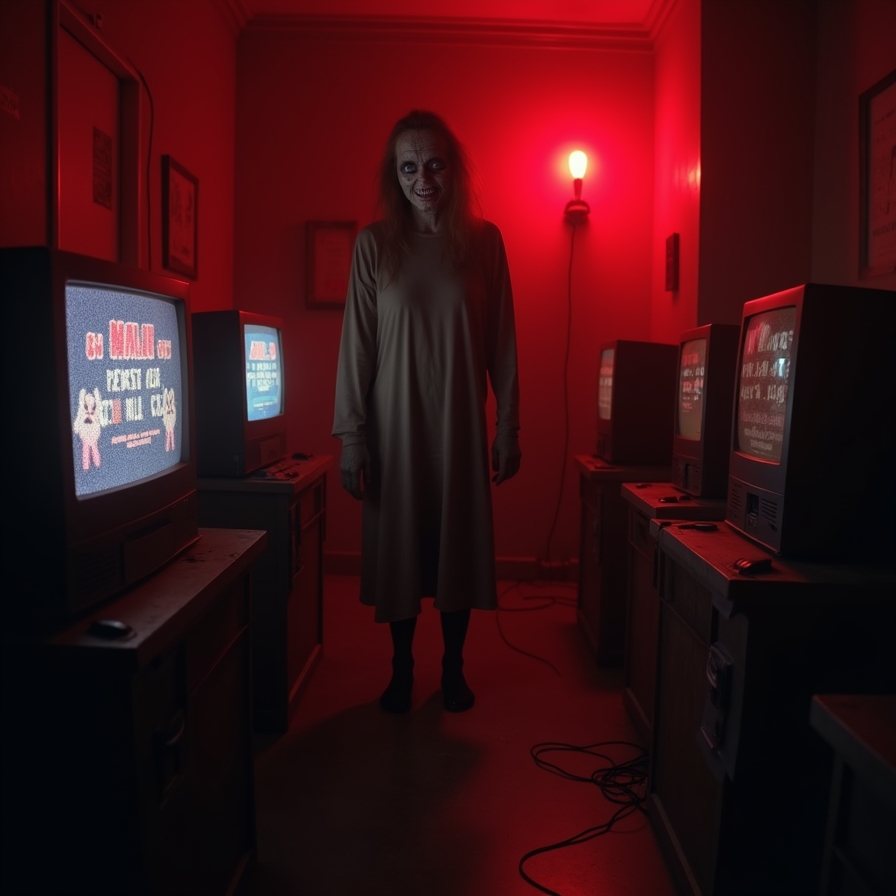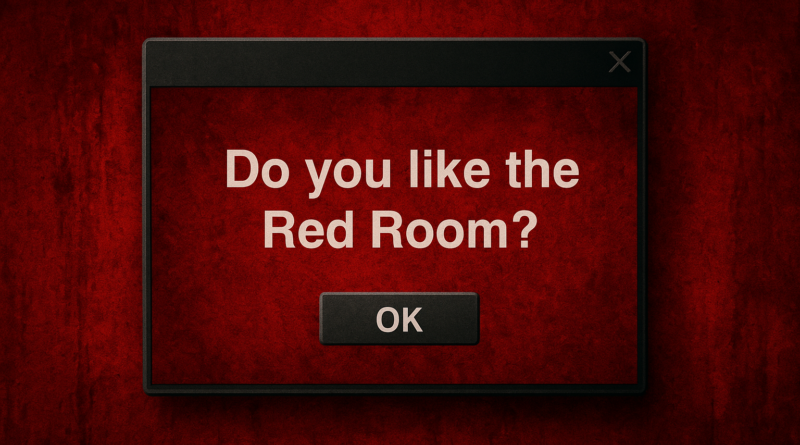The Red Room Curse: The Internet’s Most Haunted Pop-Up
The internet has no shortage of strange tales, but few carry the same unsettling weight as the legend of the Red Room Curse. Unlike classic ghost stories tied to dark forests or abandoned houses, this story exists in the shadowy corners of cyberspace—a legend that whispers about death through a simple pop-up window. Some say it’s only an urban myth born from online paranoia. Others insist it is something much darker, a lingering presence that has followed the evolution of the web since the late 1990s.

Origins of the Legend
The earliest known mentions of the Red Room Curse began circulating in Japan during the early days of broadband. Internet forums and message boards were fertile ground for creepy tales, but this one was different. The legend told of a mysterious pop-up window that would suddenly appear while browsing. Unlike harmless spam or adware, this window was said to contain a chilling, blood-red background with black text asking a single question:
“Do you like the Red Room?”
According to the story, the user could try to close the window, shut down the browser, or even reboot their computer—but the pop-up always returned. The question grew more insistent, repeating over and over until the user’s screen was flooded with the same sinister phrase.
And then, the curse was said to begin.

The Terrifying Consequence
What happens after the question appears varies depending on who tells the story. In most versions, the victim is found dead within days—sometimes even hours. Their death is often brutal and mysterious, and the walls of their room are said to be smeared in blood, painted crimson as though echoing the pop-up’s haunting words.
In another version, the victim is compelled by an unseen force to take their own life, covering their surroundings in blood before leaving behind cryptic signs referencing the Red Room.
This detail is what makes the legend uniquely disturbing: unlike most internet myths, the Red Room Curse blurs the line between digital harassment and supernatural possession.
A Dark Tie to Real Events
The Red Room Curse moved from obscure internet folklore to mainstream infamy in 2004. That year, a Japanese schoolgirl murdered her classmate Satomi Mitarai in a crime that shocked the nation. Investigators discovered the killer was an avid internet user, and rumors quickly spread that she had visited a flash animation site about the Red Room Curse before committing the murder.
Although never confirmed, the story went viral across forums and chatrooms, cementing the Red Room Curse as one of the internet’s most sinister legends. For many, it became impossible to separate the myth from real-life horror.
Why the Legend Sticks
Urban legends survive because they play on primal fears, and the Red Room Curse taps into a unique combination of modern anxieties:
Fear of technology – The idea that your computer, a tool you trust daily, could become the gateway to a haunting.
Loss of control – The pop-up that won’t close is a metaphor for powerlessness, something everyone who’s fought malware or viruses can relate to.
Isolation – Victims are always alone in their “red rooms,” a chilling reminder of how isolating digital spaces can be.
Blurring of real and virtual – Unlike Bloody Mary or the Hookman, this legend doesn’t belong to the campfire—it belongs to the devices we carry everywhere.
Variations Across the Internet
Over the years, the Red Room Curse has evolved. Some claim the curse hides in obscure websites, ready to trigger if you click the wrong link. Others say it spreads through emails, chain messages, or shady files disguised as games or videos. On the darker side of the internet, there are whispers of an actual downloadable program that mimics the cursed pop-up—opening an endless series of windows until the machine crashes.
No matter the variation, the conclusion is always the same: once the Red Room finds you, there is no escape.

The Psychological Angle
Skeptics argue that the Red Room Curse is simply a modern ghost story. The internet itself acts as the haunted house, with the pop-up playing the role of the phantom at the door. Psychologists suggest that the legend resonates because it plays into the idea of forbidden knowledge: the more we try to understand, the deeper we fall into fear.
In that sense, the Red Room is less about supernatural death and more about the human mind’s tendency to create monsters in digital shadows.
But Could It Be Real?
For every skeptic, there’s a believer. Some internet users insist they’ve seen the pop-up themselves, describing the words on the blood-red background in eerie detail. Others claim friends encountered it before dying in mysterious circumstances. Of course, these stories are difficult to prove—partly because the very nature of the curse prevents survivors from telling the tale.
What’s more disturbing is how closely the legend mimics the darker corners of reality. Cyberbullying, predatory websites, and disturbing online games have led to real harm and even suicide. In a way, the Red Room Curse serves as a symbolic reminder of the very real dangers that lurk online.
The Endless Allure of the Red Room
Today, the Red Room Curse continues to spread through YouTube videos, Reddit threads, creepypasta sites, and horror forums. New generations discover it, retelling the tale with fresh twists. Sometimes it’s described as a virus, sometimes as a supernatural entity, and sometimes as a sinister experiment conducted by unknown forces.
But one thing remains constant: the question that begins it all.
Do you like the Red Room?
If you ever see that pop-up appear on your screen, legend has it there’s only one answer to give—because if you say no, you may never get the chance to say anything again.



